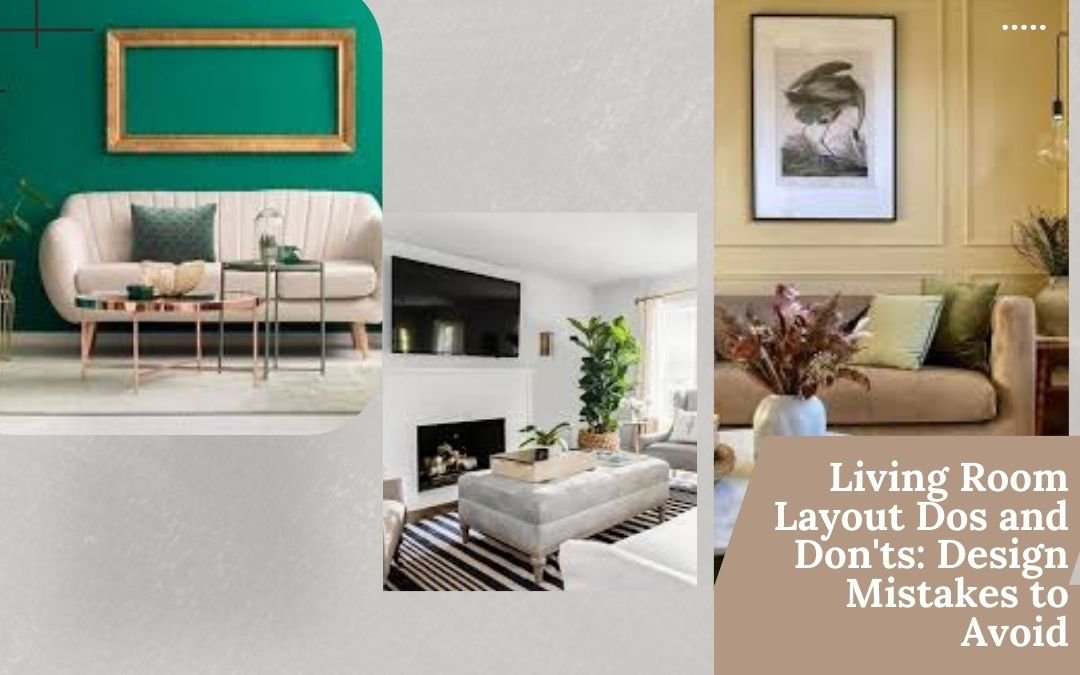The living room is often considered the heart of the home, where family and friends gather to relax, entertain, and create lasting memories. As such, its layout and design are crucial in creating a functional and inviting space. In this comprehensive guide, we will explore the dos and don’ts of living room layout, including common design mistakes to avoid and tips for creating a cohesive and stylish living room that meets your needs and lifestyle.
Dos of Living Room Layout
- Do Consider Traffic Flow: When planning your living room layout, ensure there is enough space for easy movement between furniture pieces. Avoid placing furniture in high-traffic areas or blocking doorways and pathways.
- Do Create Conversation Areas: Arrange furniture in a way that encourages conversation and interaction. Consider grouping seating around a focal point, such as a fireplace or coffee table, to create a cozy and inviting atmosphere.
- Do Balance Furniture Placement: Balance is key in living room layout. Ensure that furniture pieces are distributed evenly throughout the room to create a harmonious and visually appealing space.
- Do Pay Attention to Scale: Choose furniture that is proportionate to the size of your living room. Oversized furniture can overwhelm a small space, while too-small furniture can make a large room feel empty. Aim for a balance of scale and proportion in your furniture selection.
- Do Incorporate Functional Storage: Consider incorporating multifunctional furniture pieces, such as ottomans with hidden storage or built-in shelving, to maximize storage space in your living room. This helps keep clutter at bay and maintains a clean and organized space.
- Do Use Area Rugs to Define Spaces: Area rugs can help define different areas within your living room, such as seating areas or dining areas. Use rugs to anchor furniture groupings and add warmth and texture to the room.
- Do Pay Attention to Lighting: Lighting plays a crucial role in living room design. Incorporate a mix of ambient, task, and accent lighting to create a well-lit and inviting space. Consider using dimmer switches to adjust the lighting levels according to the occasion.
- Do Personalize Your Space: Infuse your personality into your living room design by incorporating personal touches such as artwork, photos, and decorative accessories. These elements help create a space that feels uniquely yours.
Don’ts of Living Room Layout
- Don’t Overcrowd the Space: Avoid overcrowding your living room with too much furniture. Allow for enough space between furniture pieces for comfortable movement and a sense of openness.
- Don’t Push Furniture against the Walls: While it may seem like a good way to maximize space, pushing all furniture against the walls can make the room feel cold and uninviting. Instead, create a more intimate seating arrangement by pulling furniture away from the walls.
- Don’t Forget About Function: While aesthetics are important, don’t sacrifice function for style. Ensure that your living room layout meets your needs and lifestyle, whether it’s for relaxing, entertaining, or working.
- Don’t Ignore Traffic Patterns: Consider how people will move through the space and avoid placing furniture in pathways or blocking access to doors and windows.
- Don’t Use Furniture That’s Too Big or Too Small: Choose furniture that is appropriately scaled for your living room. Oversized furniture can overwhelm a small space, while too-small furniture can make a large room feel empty.
- Don’t Neglect Lighting: Lighting is crucial in living room design. Avoid relying on a single overhead light and instead incorporate a mix of ambient, task, and accent lighting to create a well-lit and inviting space.
- Don’t Skimp on Comfort: While style is important, comfort should not be overlooked. Choose furniture that is comfortable and inviting, allowing you and your guests to relax and enjoy the space.
- Don’t Forget About Balance: Balance is key in living room layout. Ensure that furniture pieces are distributed evenly throughout the room to create a harmonious and visually appealing space.
Conclusion
Designing the perfect living room layout requires careful consideration of both form and function. By following these dos and don’ts, you can create a stylish and functional living room that meets your needs and reflects your personal style. Remember to balance furniture placement, pay attention to scale and proportion, and incorporate personal touches to make your living room a welcoming and inviting space for all.

